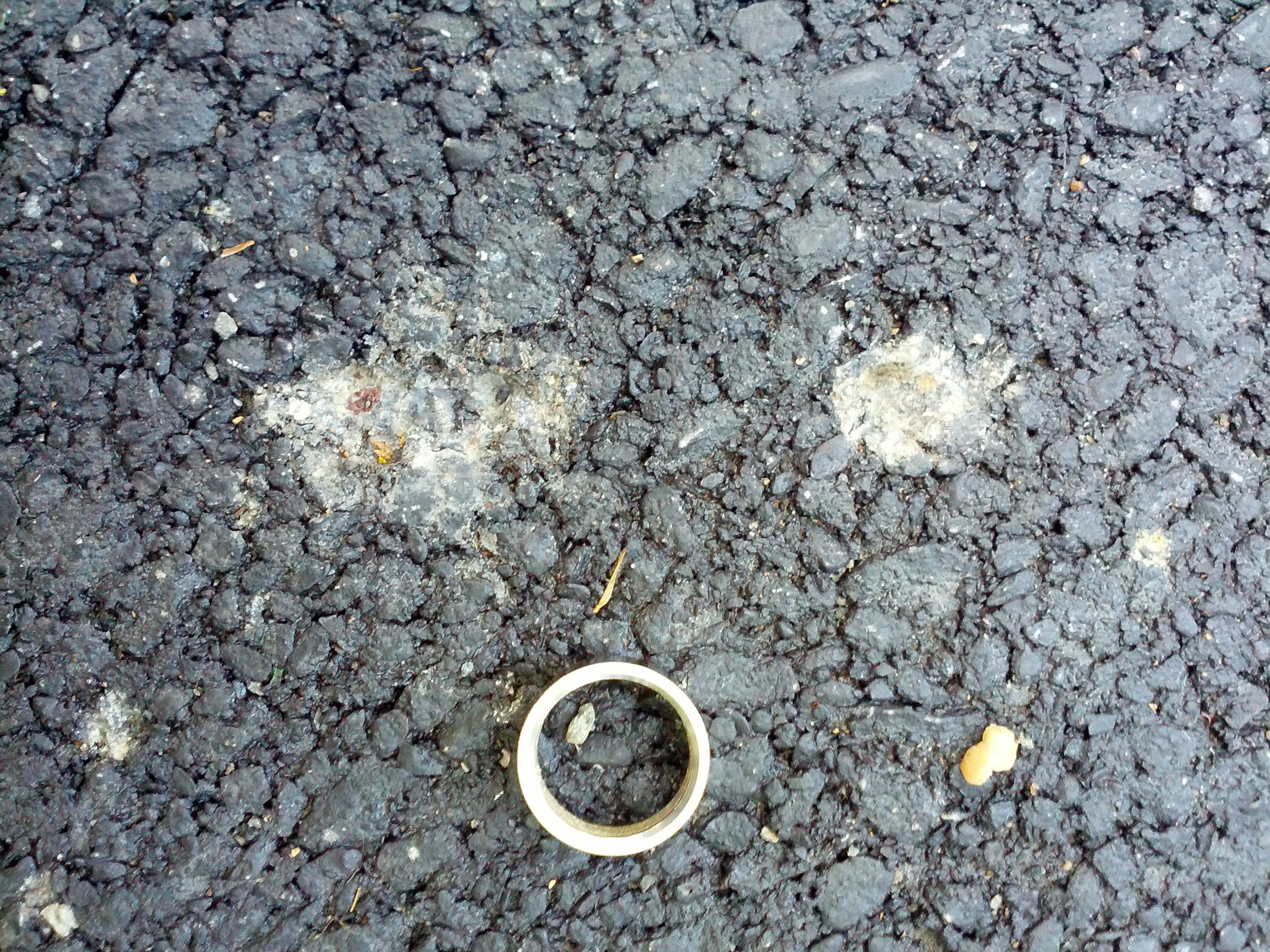creaky
New member
- Sep 30, 2013
- 116
- 0
I cleaned my wife's car yesterday and this afternoon noticed these small, shallow divots in the driveway on the side where her car was located. I can't unfortunately get the close-up pic to upload but basically there a bunch of pea-to-nickel size small indentations in the driveway that are gray (not black), like it has been dug out with a small spoon. The birds-eye shot is attached.
I used ONR 1.5 oz-3gal for the "Garry Dean" wash preceded by Stoner Tarminator on the wheels and exhaust then Griot's wheel wash. If it could be anything I imagine it was the Tarminator but I did hose everything down afterward. I used Tarminator on my car last week with no problems. This was the first time I'd done the "GD" wash on the new driveway.
The driveway is asphalt and was installed in July (so not yet sealed). It was not a particularly hot day yesterday (about 75 degrees) and it has been cool here this summer (lately getting down into the 50s at night).
Any ideas?
I used ONR 1.5 oz-3gal for the "Garry Dean" wash preceded by Stoner Tarminator on the wheels and exhaust then Griot's wheel wash. If it could be anything I imagine it was the Tarminator but I did hose everything down afterward. I used Tarminator on my car last week with no problems. This was the first time I'd done the "GD" wash on the new driveway.
The driveway is asphalt and was installed in July (so not yet sealed). It was not a particularly hot day yesterday (about 75 degrees) and it has been cool here this summer (lately getting down into the 50s at night).
Any ideas?
